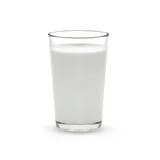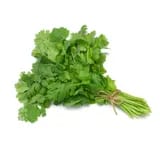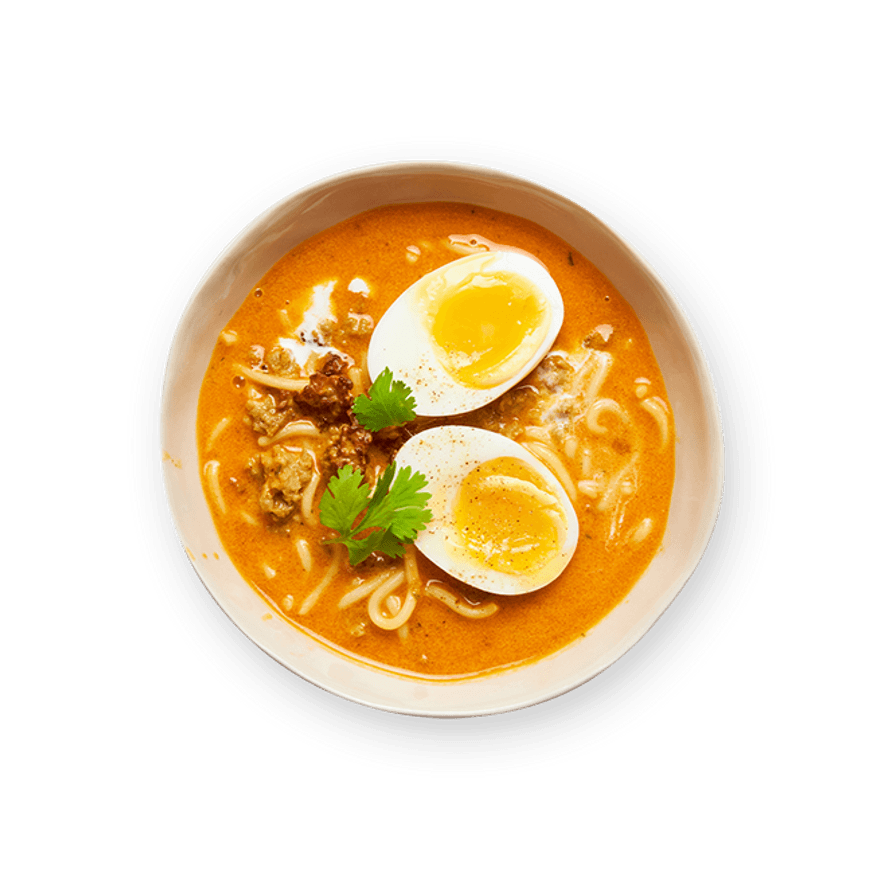Creamy Coconut Ramen with Pork
101 reviewsTry this deliciously creamy ramen dish - we know you'll love it!

Ingredients
Utensil
Pot (small)
recipe

Step 1
In a saucepan or cooker, add a drizzle of olive oil. Brown the sausage meat for 5-7 mins, over high heat, stirring to loosen the pieces.

Step 2
At the same time, cook the eggs in a pot of boiling water for 6 mins. Remove the eggs from the pot & plunge them into a bowl of icy cold water, to stop the cooking. Once cooled, gently peel the eggs & set aside.



Step 3
Once the meat is cooked, add the tomato paste, coconut milk, noodles and 200 ml of water per serving. Mix well, cover then simmer for 1 minute. Add the seasoning packet & a little salt. Mix and cook for another 2 mins.

Step 4
Serve the noodles in a bowl with the soft-boiled egg cut in half and a few coriander leaves, if you have them. Enjoy !
Personal notes
Add your own flavor!
Nutrition facts
Average estimated amount for one serving
| Energy | 1081 cal. |
| Fat | 51 g |
| Carbohydrates | 110 g |
| Protein | 42 g |
| Fiber | 7 g |
Values are based on an average estimate for one serving. All nutrition information presented on Jow is intended for informational purposes only. If you have any concerns or questions about your health, please consult with a health-care professional.
On average, one serving of the recipe "Creamy Coconut Ramen with Pork" contains 1081 Energy, 51 g of Fat, 110 g of Carbohydrates, 42 g of Protein, 7 g of Fiber.
Price per portion
| € | Nos recettes à -2 € par portion |
| €€ | Nos recettes entre 2 € et 4 € par portion |
| €€€ | Nos recettes à +4 € par portion |
Please note, the price above is dependent on your grocer and the available products in the grocery store you chose.
Scores


C Nutri-score
The Nutri-score is an indicator intended for understanding nutritional information. Recipes or products are classified from A to E according to their food composition to promote (fiber, proteins, fruits, vegetables, legumes, etc.) and foods to limit (energy, saturated fatty acids, sugars, salt, etc.).
A Green-score
The Green-score is an indicator representing the environmental impact of food products. The recipes or products are classified from A+ to F. It takes into account several factors on the pollution of air, water, oceans, soil, as well as the impacts on the biosphere. These impacts are studied throughout the product life cycle.
Retrieving reviews...


